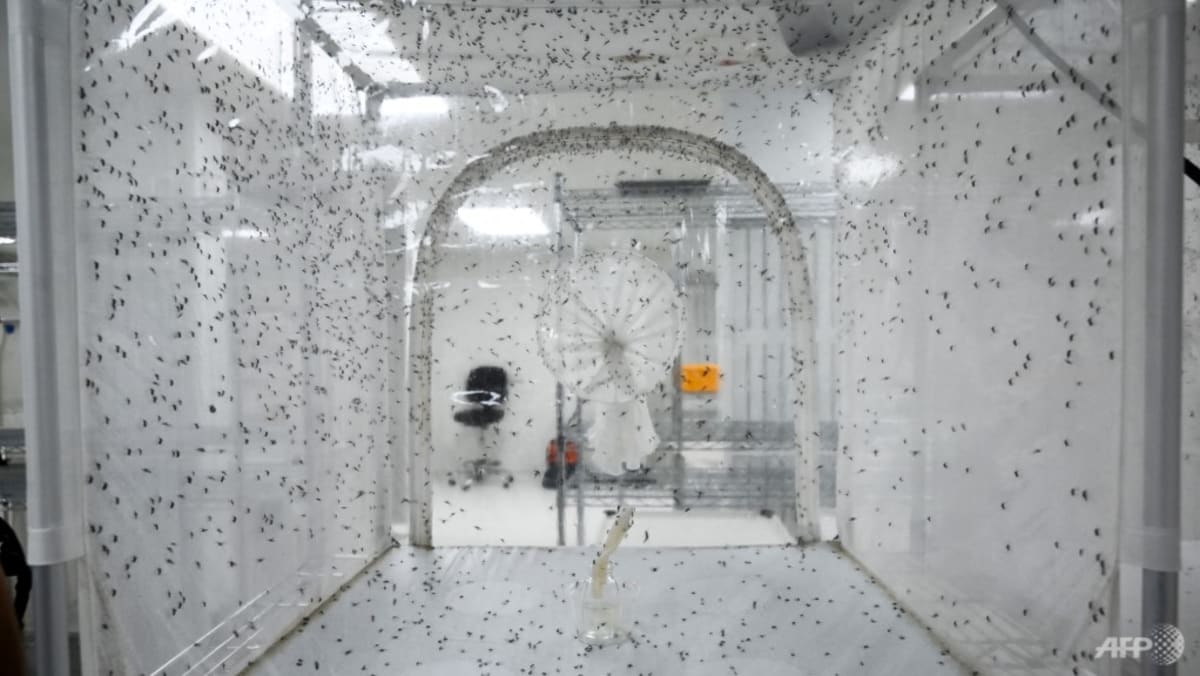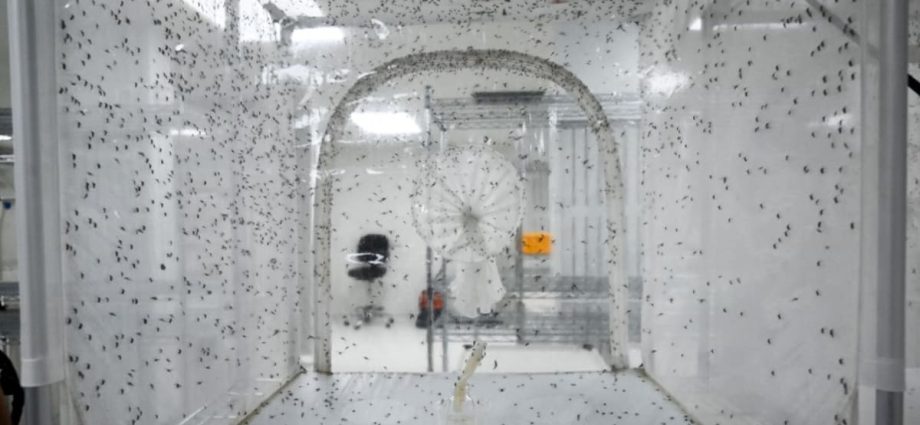
NEA also launched the annual National Dengue Prevention Campaign last month to raise awareness, in addition to ongoing dengue inspections.
Residents, especially those residing at dengue cluster areas, are reminded to take steps to protect themselves.
This includes spraying insecticides in dark corners around the house, applying insect repellent regularly and wearing long-sleeve tops and long pants.
Stakeholders should also take immediate action to suppress Aedes mosquito population and break the disease transmission. This includes measures such as breaking up hardened soil, lifting and emptying empty flowerpot plates, as well as overturning pails and wiping their rims.
AUTOMATED PRODUCTION OF WOLBACHIA-AEDES MOSQUITOES
Since July last year, NEA expanded Project Wolbachia to about eight additional sites – about 1,400 Housing and Development Board (HDB) blocks – in a multi-site field study to determine its impact on dengue cases.
Introduced in 2016, Project Wolbachia involves the release of male Wolbachia-carrying Aedes aegypti mosquitoes at some residential estates with a high risk of dengue to curb the urban Aedes aegypti mosquito population in the community.
“When the released male Wolbachia-Aedes mosquitoes mate with the urban female Aedes aegypti mosquitoes that do not carry Wolbachia, the resulting eggs do not hatch. This is due to a biological phenomenon known as cytoplasmic incompatibility,” said NEA.
“Hence, continued release of male Wolbachia-Aedes is expected to reduce the urban Aedes aegypti mosquito population, and hence lower the risk of dengue transmission over time.”
With this, about 30 per cent of HDB blocks and 5 sq km of landed estate will be covered, comprising about 300,000 households.
To support the project expansion, NEA said it has increased the production capacity of male Wolbachia-Aedes mosquitoes per week from 2 million to 5 million.
As mosquito production and release is labour intensive, the agency added it partnered Orinno Technology to custom-develop ways to automate production and release.
“Manual processes were thus replaced by automation and engineering solutions,” said NEA, with the partnership addressing challenges in areas of scale and efficiency, accurate separation between male and female mosquitoes, and fit male mosquitoes.
Some of the specific technologies developed include a timed egg hatching chamber – improving productivity by 20 times – as well as the pupae sex sorter, larvae counter and mosquito launcher.
“Development of the automated modular systems has significantly increased production efficiency of male Wolbachia-Aedes mosquitoes and reduced reliance on manpower,” said NEA.
“This increase in NEA’s mosquito production capacity supports NEA’s expansion of Project Wolbachia to cover more areas in a shorter time frame, and for NEA to test out different strategies and approaches in different areas. This ultimately contributes towards NEA’s future wider scale deployment of the technology to fight dengue.”

